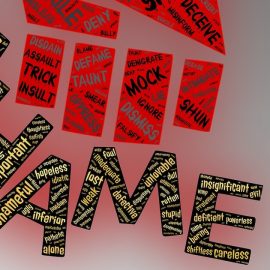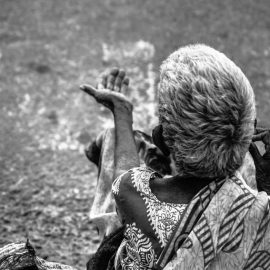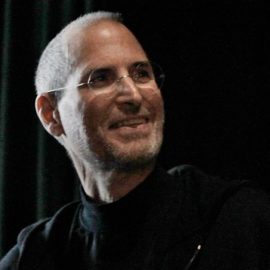

This article is an excerpt from the Shortform book guide to "Caste" by Isabel Wilkerson. Shortform has the world's best summaries and analyses of books you should be reading.
Like this article? Sign up for a free trial here .
What are the three biggest problems with the caste system? Where do these problems stem from?
According to Isabel Wilkerson, the author of Caste, the dominant caste’s beliefs in an innate right to be in control give them a sense of entitlement and the authority to police the actions of the subordinate caste. This causes three general problems. First, upper-caste entitlement can lead to violence, second, people in the lower caste internalize and reproduce that violence, and third, society misses out on the lower class’s contributions.
Here are the three problems, explained.
Problem 1: Upper Caste Entitlement Leads to Discrimination
The first major problem with the caste system is the fact that entitlement leads to discrimination. Historically, white people have been so convinced of their own superiority that they responded with resistance and criminal acts to any effort by the subordinate caste to uplift their lives. According to the author, Jim Crow laws and the Ku Klux Klan were both responses to Reconstruction, and the subordinate caste faced angry mobs in both the North and South in response to progress, with the mobs specifically targeting blacks who showed signs of prosperity. (Shortform note: Unfortunately, these backlashes can sometimes prevent or slow future progress. According to historian Lawrence Glickman, moderate lawmakers are often reluctant to support legislation that advances racial equality for fear of setting off white backlash among their constituents.)
The Self-Deputizing of the Dominant Caste
According to Wilkerson, white entitlement creates scenarios in which white citizens feel justified in monitoring Black behavior and policing it if necessary. Over the last decade, technological advances have allowed society to witness these incidents for themselves on video.
In most of these videos, the offending white citizen is operating under a similar presumption—a Black citizen is behaving or existing outside the confines of what is expected of their status. The subordinate behavior raising red flags is often innocuous and has included everything from bird watching in Central Park to loading groceries into their own cars. Wilkerson believes the videos of these incidents expose the unconstituted intrusion of white people into the daily lives of Black people. Often, the self-deputized white person is criticized or fired from their job following the release of the video. Yet despite the public outcry against these actions, this behavior continues.
(Shortform note: While these videos alone haven’t been enough to stop white people from self-deputizing, they’re still a valuable tool for shining a light on everyday racism. Civil rights activists in the 1950s and ‘60s set a precedent for this: They understood the power of capturing racist behavior on film and continually lobbied news crews to send cameras to their marches and demonstrations. This power extends to videos of police encounters with Black citizens. For example, the video of George Floyd’s death at the hands of a police officer played a large part in the officer’s trial and ultimately led to him being convicted of murder.)
According to the author, the humiliation experienced by the Black citizen is only one negative consequence of these incidents. The offender wastes valuable law enforcement time and energy and creates danger for the Black citizen when they cavalierly call the police on them. This latter consequence is potentially the most damaging given the high death rate of black Americans at the hands of law enforcement officers. For example, in 2019, 23-year-old Elijah McClain died in police custody after someone called 911 to report he was “wearing a ski mask and waving his arms” while walking home. According to McClain’s friends and family, he was anemic and wore the ski mask to keep warm, and he was waving his arms because he was dancing to music.
(Shortform note: Since calling the police can be so dangerous, what should we do instead? Wilkerson doesn’t elaborate, but here are some suggestions: For non-life-threatening situations, consider the Community Resource Hub’s list of 12 alternatives to calling the police, such as talking to your neighbors personally if their music is too loud. You can also find a list of local resources in your city, such as domestic violence hotlines and crisis centers, that may be able to de-escalate a situation without involving the police. By using these alternative resources, you’ll avoid wasting law enforcement resources and keep your Black neighbors safer.)
The Influence of the Media on Cultural Bias
Wilkerson believes that one reason white people feel so justified in self-deputizing is the deeply unfair way the media portrays Black people. According to her, media outlets grossly exaggerate the trials and tribulations of the Black community. Today, only one in five Black Americans is poor, and Black people make up only about 27% of the poor population. In contrast, white Americans account for 66% of the nation’s poor population. However, 59% of the poor people depicted in news stories are Black and only 17% are white. The result is a skewed perspective on Black poverty. This false representation by the media further stigmatizes the subordinate caste and promotes white self-deputizing.
| Is Media Representation of Poverty a Bigger Problem Than Poverty Itself? Some reviewers took issue with Wilkerson’s argument that media representation of Black poverty is a bigger problem than poverty itself. For instance, Charisse Burden-Stelly of the Boston Review questioned why Wilkerson focused on the public perception of Black poverty instead of the underlying, racially-skewed causes of poverty itself. Burden-Stelly concludes that this choice is probably part of Wilkerson’s repeated insistence that “oppression and exploitation are understood through indignities that starkly remind the Black elite of their Blackness.” A closer look at the statistics supports Burden-Stelly’s point that Black poverty itself deserves Wilkerson’s attention. While Wilkerson reports that only 27% of poor people are Black, Black people make up just 13% of the overall population of the United States—therefore, they’re significantly overrepresented in the poor population. What’s causing that disparity? Scholars say it’s because Black Americans have faced constant (and constantly evolving) forms of discrimination and have never had a truly equal economic playing field. |
Problem 2: The Lower Caste Reproduces Upper-Caste Prejudice
According to the author, the dominant caste’s sense of ingrained entitlement is often so powerful that it crosses caste lines. When that happens, members of the lowest caste internalize the dominant caste’s standards and use them against their fellow lower caste members as people attempt to climb the ladder high enough to avoid being on the bottom. (Shortform note: This intra-caste animosity isn’t a universal response to being in the lowest caste. For example, instead of holding people to white standards, the Black power movement encouraged people to take pride in being Black.)
Wilkerson believes that one of the most significant forms of this prejudice is colorism, or the intra-caste classification of rank based on how close a subordinate caste person’s skin color is to white. This intra-caste grouping is especially tragic considering the likely cause of lighter skin tones in Black people—the sexual assault of their ancestors by enslavers. (Shortform note: Colorism is not unique to the Black community—white people are equally guilty of perpetuating the idea that lighter brown skin is better than darker brown skin. This is one reason that even intentionally diverse marketing campaigns (often led by predominantly white marketing companies) tend to only feature people with lighter skin.)
Intra-caste discrimination also impacts the experiences of Black immigrants. Wilkerson describes how, much like the European immigrants who gained favor in America by turning against the subordinate caste, Black immigrants tend to fall into the same ideological trap—they emphasize their specific ethnicity (for example, Nigerian or Jamaican) as a way to distance themselves from Black Americans whose ancestors were enslaved. In other words, they adopt the dominant caste’s disdain for Black Americans as a strategy to keep themselves off the bottom rung of the social hierarchy.
(Shortform note: While Black immigrants may display prejudice against U.S.-born Black Americans, they are still victims—not perpetrators—of systemic racism in America. According to an immigrant advocacy group, Black immigrants are more likely to be detained by the U.S. Immigration and Customs Enforcement (ICE) and have higher bond amounts set for their release than non-Black immigrants. They’re also more likely to be put in solitary confinement while in ICE custody, more likely to face deportation, and more likely to be denied asylum than non-Black immigrants.)
Problem 3: Society Misses Out on Lower Caste Contributions
According to Wilkerson, the dominant caste’s assumed alpha status hinders innovation by barring subordinate leaders from using their skills to change the world. But history is full of other examples in which the dominant caste has held back subordinate progress from society to the detriment of many. The dominant caste has consistently refused to acknowledge the achievements of subordinates to protect their own status and keep subordinates down.
One example of this trend is the story of Benjamin Montgomery, who was born into slavery in the American South. Montgomery was a gifted mechanic who managed the plantations of Jefferson Davis (who would eventually serve as President of the Confederate States of America) and Davis’ brother, Joseph. Montgomery noticed that steamboats carrying supplies to the plantations couldn’t navigate shallow waters, so he invented a new type of propeller that would allow them to do so. However, in 1858, Montgomery’s patent was denied because “a machine invented by a slave, though it be new and useful, cannot, in the present state of the law, be patented.”
While it’s impossible to know for sure, Montgomery’s invention may have impacted the tide of the American Civil War if he’d been able to patent and produce it. Historians agree that the better-developed railroad system in the North played a major role in the Union Army’s ultimate success because it allowed for faster distribution of troops and supplies. Without as many railroads, the Confederacy couldn’t keep up—and without Montgomery’s shallow water propeller design, they couldn’t use the many rivers in the region as a reliable form of transportation.
| Acknowledging Black Talent Within the Logic of Caste Wilkerson argues that the dominant caste will refuse to acknowledge lower-caste talent, even if accepting that talent would be in their own self-interest. This trend takes on an interesting dynamic in the case of Benjamin Montgomery—namely that both Jefferson Davis and Joseph Davis did recognize Montgomery’s talent, so much so that they both (unsuccessfully) attempted to patent his idea on his behalf. Jefferson Davis even amended patent law in the Confederacy after rising to power to allow for patents for enslaved people’s ideas. This contradicts Wilkerson’s argument that the dominant caste will never recognize Black talent when it benefits them. However, Wilkerson isn’t totally wrong. While the Davis brothers saw the value in Montgomery’s idea, they approached the issue in a way that upheld the existing caste system. The patent law that Jefferson Davis enacted made it possible for enslavers to patent the ideas of the people they enslaved. His rationale was that, because slaves were seen as the property of their enslavers (not actual people), their ideas should automatically become the enslaver’s intellectual property. In other words, Davis recognized that subordinate caste members can have good ideas, but didn’t believe they should own the rights to their own inventions. |

———End of Preview———
Like what you just read? Read the rest of the world's best book summary and analysis of Isabel Wilkerson's "Caste" at Shortform .
Here's what you'll find in our full Caste summary :
- How a racial caste system exists in America today
- How caste systems around the world are detrimental to everyone
- How the infrastructure of the racial hierarchy can be traced back hundreds of years






